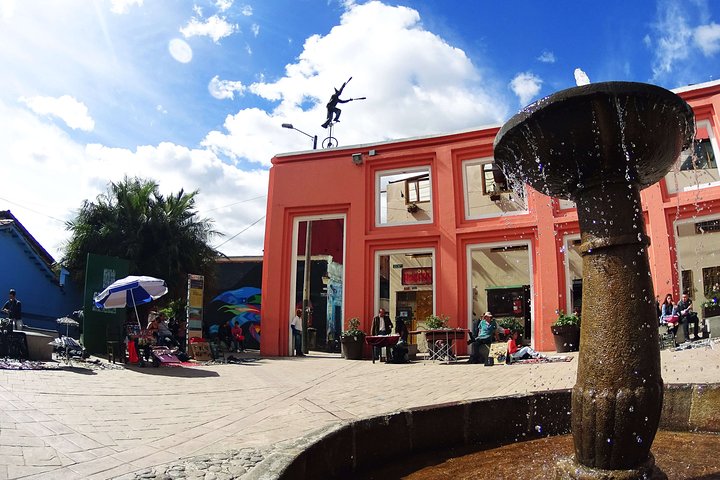Exploring Bogotá’s Heart: A Cultural Journey Through Teusaquillo
Eager to explore Bogotá’s rich history and vibrant culture, I embarked on a walking tour of Teusaquillo. This journey promised a deep dive into the city’s past, its culinary delights, and its thriving artistic scene.
Discovering Teusaquillo: A Journey Through Time and Culture
As a cultural anthropologist, I have always been drawn to the stories that cities tell through their streets, buildings, and people. Bogotá, with its rich tapestry of history and culture, has long been on my list of places to explore. When I heard about the Teusaquillo Walking Tour, I knew it was the perfect opportunity to delve into the heart of this vibrant city.
The tour began in the district of Teusaquillo, a place that seemed to pulse with the energy of Bogotá’s past and present. Our guide, a passionate storyteller, led us through the streets, weaving tales of Colombia’s journey from independence in 1819 to the peace agreement in 2016. As we walked, the architecture around us spoke volumes. The buildings, with their intricate designs and historical significance, stood as silent witnesses to the country’s tumultuous yet inspiring history.
One of the highlights was the National Museum of Colombia. Here, the walls seemed to echo with the voices of the past, each exhibit a testament to the resilience and creativity of the Colombian people. As I wandered through the museum, I couldn’t help but reflect on the power of art and history to connect us to the essence of a place.
A Taste of Bogotá: Culinary Delights and Local Flavors
No cultural exploration is complete without indulging in the local cuisine, and the Teusaquillo tour did not disappoint. Our journey through the district was punctuated by stops at charming cafés and bustling markets, each offering a taste of Bogotá’s culinary heritage.
At Parque Central Bavaria, we learned about the city’s industrialization and the role of the first beer company in shaping modern Bogotá. The stories of the Cavas and Falcas buildings were fascinating, but it was the flavors that truly captured my imagination. Sipping on a locally brewed beer, I felt a connection to the city’s past, a reminder of how food and drink can serve as a bridge between history and the present.
The tour also introduced us to the vibrant street food scene. From savory empanadas to sweet arepas, each bite was a celebration of Bogotá’s diverse cultural influences. As I savored these flavors, I was reminded of the importance of food in understanding a culture, a theme that has resonated throughout my travels.
Art and Expression: The Soul of Teusaquillo
Teusaquillo is a district where art and culture thrive, and our tour offered a glimpse into this creative spirit. The Galeria Visaje Graffiti was a highlight, showcasing the work of some of Colombia’s most talented street artists. The vibrant murals told stories of struggle, hope, and identity, each piece a reflection of the city’s soul.
As we strolled through Parkway Plaza, I was struck by the bohemian atmosphere. This iconic meeting place for artists and creatives was alive with the sounds of music and laughter. The architecture, reminiscent of Bogotá in the 1950s, added to the charm, creating a space where tradition and modernity coexist harmoniously.
The tour concluded at the Casa Museo Jorge Eliecer Gaitan, a site that holds a significant place in Colombia’s political history. Standing in the house of a man who changed the course of the nation’s history, I felt a profound sense of connection to the stories that have shaped Bogotá.
Reflecting on my experience, I realized that the Teusaquillo Walking Tour was more than just a journey through a city; it was an exploration of identity, resilience, and the enduring power of culture. For anyone seeking to understand Bogotá beyond its surface, this tour offers a window into the heart of a city that continues to inspire and captivate.

















































